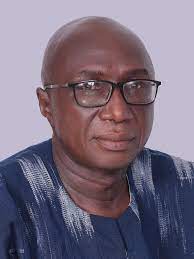
Introduction
In light of what is happening in Bawku and now threatening to engulf the Upper East and Northeast Regions, it is important to provide historical context of the conflict to the general Ghanaian public, media and policy makers. The sources referenced in this piece are all primary ones. These include official annual reports written by colonial commissioners in the Northern Territories meant at the time solely for the white colonial masters and not for native eyes. The reports have since become public documents that can be accessed in archives. Others are official documents now readily available at the National and Regional Archives.
Mamprusi as the Chosen Nation
The British colonial rulers arrived in northern Ghana around 1897, at a time some communities in what is now Savanah, Upper West and Upper East Regions were devastated by slave raids carried out by Samory, Babatu and Amrahia from 1895-1897. These slave raids left in their wake serious socio-economic upheavals on the Wala, Dargarti, Lobi, Sisala, Builsa, Kasena, Nankani and Frafra as well as the north-western part of Gonjaland, Bole. The British identified and signed treaties with chiefs from the “chiefly” groups: Dagomba, Gonja, Mamprusi in particular. These were also nominally Muslim. The overwhelming majority of the tribes in the Upper Regions had no “chiefs” and were classified as acephalous tribes. The acephalous groups were those most affected by the slave raids, and included the Kusasis even though the Kusasi area did not experience the same level of devastating wrecks by the slave raids.
The territory was vast and rife with insecurity and the British did not have the manpower for direct rule in the long term. Military rule was imposed from 1897 to 1907 to deal with the insecurity. The colonial master then made a policy decision to work towards Indirect Rule through the chiefs. With the traditional capital of Dagomba, Yendi, under German occupation, Wala and parts of Gonja decimated by the slave raids, the British chose Mamprusi as “the best in organization” at the time (Watherston, June 1908: 349). The British therefore sited their military garrison and Headquarters at Gambaga which was later relocated to Tamale in 1908 after direct civil administration was introduced in 1907. In preparation towards Indirect Rule, the colonialist adopted a “policy of supporting and emphasizing the position of the paramount native chiefs” as “the only practicable system of administering this country” (1905 Annual Report: 3). One specific way was “to buoy up the power of Mamprussi” (1910 Annual Report:15).
In 1911 a colonial commissioner took the Nayiri “for an extended tour” of the North-Eastern Province which included Kusasi, Frafra, Kasena-Nankani and Builsa areas during which the Nayiri was “acclaimed as overlord of the chiefs of all the towns he visited” (1911 Annual Report: 3). The following year, the Governor, Sir. Hugh Clifford, toured the Northern Territories and “before a large concourse of Chiefs – including those of Kanjarga and Grunshi – His Excellency formally appointed the ‘Na’ Paramount Chief of the North-Eastern Province” (1912 Annual Report: 21). The Kasena-Nankani and Builsas, led by the then Navropio, objected and were spared direct Mamprusi colonialism.
After World War I, a re-demarcation of boundaries was done in 1921 merging North-Western and North-Eastern Provinces to form the Northern Province. Parts of Kusasi, Bimoba, Konkomba and Chakosi areas to the east were appropriated by the British from the defeated Germans and designated British Mandated Area. These areas were absorbed into what was then North Mamprusi, South Mamprusi and Eastern Dagomba Districts. This meant, in effect, Nayiri was now Paramount Chief of all of present-day Upper West and East Regions, including Bimoba, Konkomba and Chakosi areas in the Northeast Region, albeit nominally. It was therefore through appointment by the British colonial master and boundary re-demarcations that the Nayiri came to rule over tribes outside the Mamprusi area.
The next step toward Indirect Rule was to identify and appoint Head or Tribal Chiefs for the different tribes. The 1929/30 Annual Report mentions that of all the people groups in present-day Upper Regions at the time, it was the Kusasi, Sisala and Dagarti who did not have recognized Tribal Chiefs. In 1931, the Acting District Commissioner of the Kusasi District, J. K. G. Syme, convened a conference of nineteen canton (divisional) chiefs, fourteen of who were Kusasis, to elect a Kusasi Tribal Chief. The conference ended in “the unanimous election” of the then Mamprusi Chief in Bawku, Naa Buguri, as Tribal Chief of Kusasis (Syme 1932: 29). The first takeaway here is that it was by election, and not conquest, or Nayiri’senskinmentpowers that a Mamprusi was first made Tribal Chief of Kusasis.
According to the Commissioner himself, before 1931, each of the chiefs was “allowed to be absolutely independent of everybody else. The Chief of Bawku has perhaps been more in the limelight than the others, but he never had any authority over them” (Syme: 29). Bawku as District Head station housing the commissioner, explains why the Chief of Bawku would be in the limelight, and why he was elected. With the “election” of a Mamprusi as Tribal Chief of Kusasis, it meant Kusasis were under direct triple colonization. First by the British, second by Nayiri as the paramount chief, and third, a Mamprusi Bawku Naba. In Frafra, Bimoba and Konkomba areas, Mamprusi princes were imposed on some communities as Head Chiefs, while others were allowed to select their own Tribal Chiefs as a form of Mamprusi Indirect Rule. In most of these places, some chiefs still go to Nalerigu to be enskinned.
With Tribal Chiefs in place, Indirect Rule was introduced in 1932/33. The districts were again re-demarcated and reduced from eleven to six in the whole of the Northern Territories. These were: Dagomba District, Gonja District, Mamprusi District, Wa District, Lawra District and Krachi District. What used to be Gambaga, Kusasi, Zuruangu and Navrongo Districts in a 1929 re-demarcation were all merged into Mamprusi District. This was done to further shore up the powers and to entrench the rule of Nayiri over the tribes in those areas as well as render the non-Mamprusi tribes invisible. The “ideal”, according to the 1933/34 Annual Report, was to ensure that all the tribes in the Upper Regions, including Bimoba and part of Konkomba, “come into Mamprusi and make a solid state extending over most of the North” (p.12). The Kasenas and Builsas stood in the way of that ideal.
Subversion of the Process
In Bawku, Naa Buguri passed barely one year after his election. After his death, the Mamprusis of Bawku claimed the office of the Tribal Chief of Kusasis in addition to the office of the Chief of Bawku for the same occupant. In other words, the office of the Chief of Bawku now belongs only to Mamprusis by right, and the office of the Tribal Chief of Kusasis belongs to the Chief of Bawku by right. This was a clear subversion of the process of election by which the first Tribal Chief was chosen. After two seemingly smooth transitions, Naa SaaWuniBugri passed in 1956, and in 1957 Mamprusi princes from Bawku trooped to Nalerigu for the enskinment of a new Chief of Bawku and Tribal Chief of Kusasis. In Nalerigu, the Nayiri claimed the appointment and enskinment of the Chief of Bawku and Tribal Chief of Kusasis as his prerogative. Some of the contesting princes, led by the family of the late SaaWuni, were enraged that Nayiri was going to enskin a one-eyed man called Mahama Yiremia of questionable Mamprusi lineage.
In a fit of rage, SaaWuni’s family carried the original regalia of the Bawku Skin (kpanjack), to AbugragoAzoka, saying: for Yiremia to become Bawku Naba and Tribal Chief of Kusasis, the Kusasis should take back the chieftaincy as original owners of the land. The Nayiri went ahead and enskinnedYiremia, and the enraged losing princes sent a petition dated 7th June 1957 to the Minister of Local Government protesting that:
It has always been the custom in olden days for the chiefs and people of the Kusasi District and the heads of all the communities in Bawku town to elect the person they thought worthy of being their chief, and by tradition and custom, the candidate elected was then sent to the Nayiri for the investiture (PRAAD Tamale: NRG8/2/138). To be continued
[The Writer is the Executive Director of The Sanneh Institute, Visiting Professor of Yale University]
By Reverend Professor John Azumah


